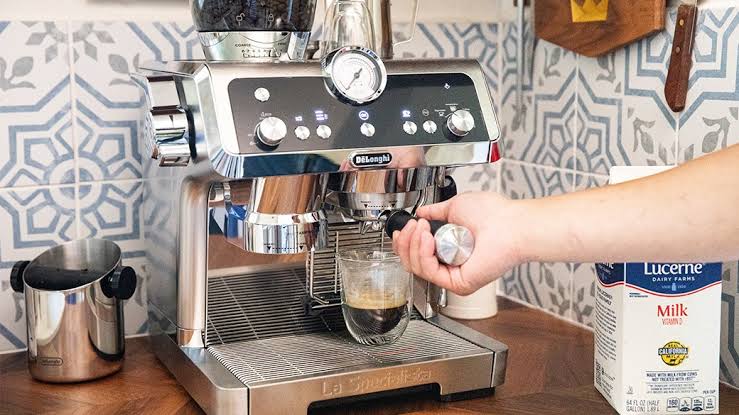Most Popular Coffee FAQ Answered.
In this Coffee FAQ blog we will navigate the world of coffee can be as rich and intricate as the beverage itself. Whether you’re a casual coffee drinker or an aficionado seeking to refine your knowledge, these Coffee FAQ often arise about the various aspects of this beloved brew. From the origins of coffee to the best brewing techniques, there’s a wealth of information to explore. In this article, we’ll delve into some of the most frequently asked questions about coffee, providing clear and concise answers to help you deepen your understanding and appreciation of this globally cherished drink.
Whether you’re curious about the differences between Arabica and Robusta beans as well as the art of coffee roasting, or the effects of caffeine consumption, we’ve got you covered in these Coffee FAQ’s. So, let’s journey into the realm of coffee and uncover the insights that can enhance your coffee experience.
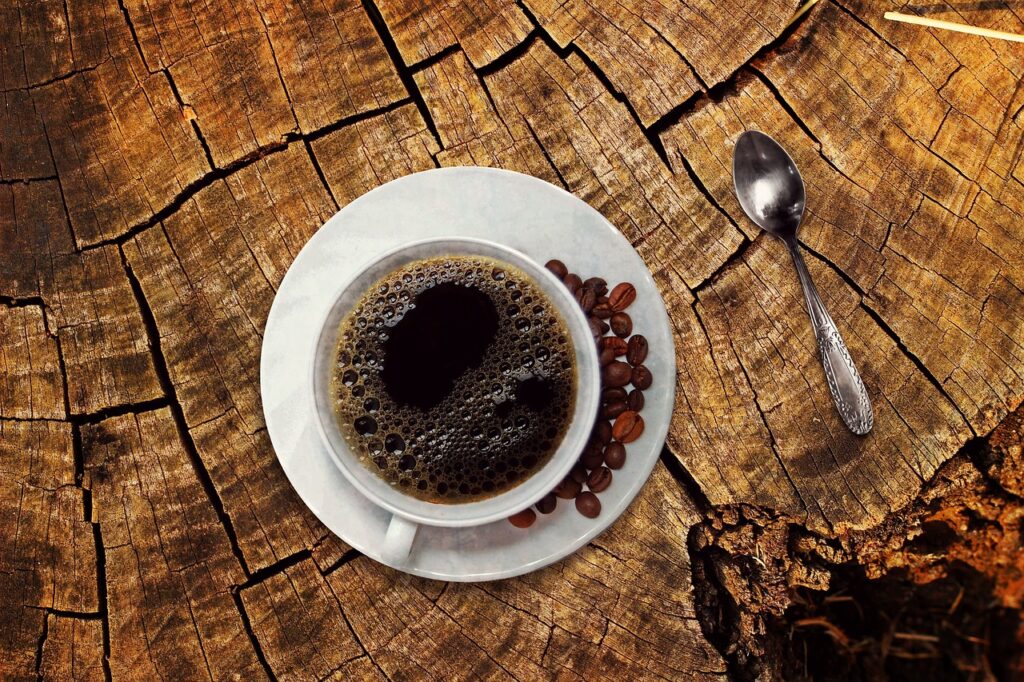
Where did coffee come from? The number ONE Coffee FAQ.
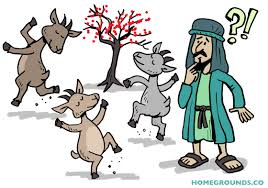
Coffee has a rich history that dates back centuries. The origin of coffee can be traced to the region of Ethiopia in East Africa. According to popular legend, a goat herder named Kaldi discovered coffee when he noticed that his goats became more energetic and lively after eating the berries from a certain plant. Curious about this effect, Kaldi tried the berries himself and experienced a similar burst of energy. He then brought these berries to a local monastery, where they were used to create a drink that helped monks stay awake during long prayers.
From Ethiopia, the knowledge of coffee and its stimulating properties gradually spread to other parts of the world. The first documented evidence of coffee being consumed as a beverage comes from the 15th century in Yemen, a country located on the southern tip of the Arabian Peninsula. Yemeni traders began to cultivate and trade coffee, and by the 16th century, coffee had become a popular drink in the Arabian Peninsula and surrounding regions.
Coffee’s popularity continued to grow, and it eventually reached Europe through trade routes. Coffeehouses, where people could gather to drink coffee, discuss various topics, and socialize, began to emerge in cities like Venice, Constantinople (now Istanbul), and eventually in other parts of Europe.
In the 17th century, coffee cultivation expanded to other regions, such as the Dutch colonies in Java (Indonesia) and the French colonies in the Caribbean. This marked the beginning of coffee plantations in various parts of the world, leading to a global coffee trade.
Over time, coffee’s popularity continued to spread across different continents, leading to the development of various coffee cultures and brewing methods. Today, coffee is grown in numerous countries, each with its own unique approach to cultivation, processing, and brewing, making it one of the most widely consumed beverages in the world.
What are the health benefits of coffee?
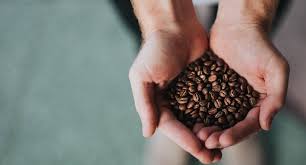
Coffee has long been associated with several health benefits, including improved mental alertness, reduced risk of certain cancers, and decreased risk of type 2 diabetes. Coffee also contains antioxidants, which help protect the body from damage caused by free radicals. However, it’s important to note that excessive coffee consumption can lead to negative side effects, such as anxiety, jitteriness, and disrupted sleep patterns.
How much Caffeine is in Coffee?
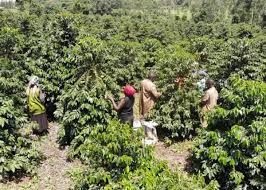
The amount of caffeine in a cup of coffee can vary widely depending on factors such as the type of coffee bean, the brewing method, the serving size, and the specific coffee brand. On average, an 8-ounce (240-milliliter) cup of brewed coffee contains about 80 to 100 milligrams of caffeine.
Here are some general guidelines for the caffeine content in various types of coffee:
- Brewed Coffee: As mentioned above, an 8-ounce cup of brewed coffee typically contains around 80 to 100 milligrams of caffeine. However, this can vary based on factors like the type of coffee beans used and the brewing time.
- Espresso: A 1-ounce (30-milliliter) shot of espresso contains approximately 63 milligrams of caffeine. Espresso is more concentrated than regular brewed coffee, so even though the serving size is smaller, the caffeine content per ounce is higher.
- Instant Coffee: Instant coffee generally contains slightly less caffeine than brewed coffee. An 8-ounce cup of instant coffee might have around 60 to 80 milligrams of caffeine.
- Decaffeinated Coffee: Decaffeinated coffee is not completely caffeine-free but contains significantly less caffeine than regular coffee. An 8-ounce cup of decaf coffee usually contains around 2 to 5 milligrams of caffeine.
- Different Coffee Varieties: Different coffee varieties, such as arabica and Robusta beans, can have varying caffeine content. Robusta beans tend to have more caffeine than arabica beans. Specialty and single-origin coffees might also have varying caffeine levels based on their origin and processing methods.
- Cold Brew: Cold brew coffee is typically higher in caffeine concentration because of the longer brewing time. A serving of cold brew can contain anywhere from 100 to 200 milligrams of caffeine or even more, depending on the recipe and dilution.
Remember that these are approximate values, and actual caffeine content can vary. Additionally, individual sensitivity to caffeine can influence how strongly someone responds to a given amount of caffeine. If you’re concerned about your caffeine intake, it’s a good idea to check the specific information provided on coffee packaging or consult with a healthcare professional.
What is the best way to Brew Coffee?
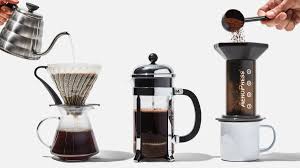
The “best” way to brew coffee can be subjective and depends on personal preferences. Different brewing methods bring out distinct flavours, aromas, and strengths in coffee. Here are a few popular methods, each with its own unique characteristics:
- Drip Coffee Maker (Automatic Coffee Brewer): Drip coffee makers are common household appliances that are easy to use. They involve placing ground coffee in a filter, adding water to the reservoir, and letting the machine do the rest. Drip coffee tends to have a balanced and familiar taste, but the flavour can vary based on factors like the quality of the coffee beans and the machine itself.
- French Press: The French press, also known as a press pot or plunger pot, involves steeping coarsely ground coffee in hot water and then pressing down a plunger to separate the grounds from the brewed coffee. This method produces a full-bodied and rich coffee with more oils and sediment compared to other methods.
- Pour-Over: Pour-over coffee involves manually pouring hot water over coffee grounds in a filter. This method allows for precise control over factors like water temperature, flow rate, and brewing time. It can produce a clean and flavourful cup of coffee with well-defined taste notes.
- AeroPress: The AeroPress is a versatile and portable brewing device that uses air pressure to extract coffee through a filter. It allows for experimentation with different brewing techniques and can produce a concentrated and smooth cup of coffee.
- Espresso Machine: Espresso machines use high pressure to force hot water through finely ground coffee, resulting in a concentrated and intense shot of coffee. This forms the base for drinks like lattes, cappuccinos, and americanos.
- Cold Brew: Cold brew involves steeping coarsely ground coffee in cold water for an extended period, typically 12 to 24 hours. This method produces a smooth, less acidic, and highly caffeinated coffee concentrate that’s usually diluted before consumption.
Ultimately, the “best” brewing method depends on your taste preferences, the coffee beans you’re using, and the amount of time and effort you’re willing to put into the brewing process. Experiment with different methods and adjust variables like grind size, water temperature, and brewing time to find the approach that produces coffee you enjoy the most.
How should Coffee be Stored?

Proper coffee storage is essential to maintain the freshness, flavour, and quality of your coffee beans. Here are some guidelines on how to store coffee effectively:
- Keep Coffee in an Airtight Container: Oxygen is one of the main enemies of coffee freshness as it can lead to oxidation and degradation of flavor compounds. Store your coffee beans in an airtight container that seals well to minimize exposure to air.
- Choose a Dark, Cool, and Dry Location: Coffee is sensitive to light, heat, and moisture. Store your coffee container in a dark, cool place away from direct sunlight, heat sources (like stoves or ovens), and areas with high humidity, such as near the sink or refrigerator.
- Avoid the Freezer and Fridge: Contrary to popular belief, it’s not recommended to store coffee in the freezer or refrigerator. Coffee beans are porous and can absorb odors and moisture, potentially impacting the flavour. Freezing and thawing can also cause moisture to accumulate on the beans, which may lead to degradation.
- Buy Whole Beans and Grind Fresh: Whole coffee beans have a longer shelf life compared to pre-ground coffee. Consider buying whole beans and grinding them just before brewing to preserve the freshness of the flavours and aromas.
- Use a One-Way Valve Bag: If you’re purchasing coffee in bags, look for those with a one-way valve. This valve allows gases (such as carbon dioxide) to escape without letting air in, helping to maintain the freshness of the beans.
- Buy in Smaller Quantities: To ensure you’re always using fresh coffee; buy in smaller quantities that you can consume within a couple of weeks to a month. This way, you’ll have a steady supply of freshly roasted beans.
- Roast Date Matters: Look for coffee beans with a roast date on the packaging. Fresher beans are typically better, and it’s ideal to use them within a few weeks of roasting for optimal flavour.
- Avoid Transparent Containers: Clear containers can expose your coffee to light, which can degrade the quality of the beans. Opt for opaque containers that block out light.
Remember that coffee is a perishable product, and its flavour and aroma will naturally degrade over time. Following these storage tips will help you extend the shelf life and enjoy a better cup of coffee.
What is the Difference between Light, Medium, and Dark Roast Coffee?

Light, medium, and dark roast coffee refer to different levels of roasting that coffee beans undergo. The roasting process significantly impacts the flavour, aroma, and appearance of the final brewed coffee. Here’s how these roast levels differ:
- Light Roast:
- Colour: Light brown, sometimes tan or cinnamon-coloured.
- Flavour Profile: Light roasts preserve more of the original characteristics of the coffee bean, including its natural acidity and unique origin flavours. These coffees tend to have brighter and more nuanced flavours, with floral, fruity, or herbal notes.
- Body: Light roasts have a lighter body and are less oily compared to darker roasts.
- Acidity: Light roasts often have higher acidity, which can result in a tangy or crisp taste.
- Caffeine Content: Contrary to a common misconception, light roasts typically have slightly more caffeine than darker roasts, as the roasting process doesn’t break down caffeine as much.
- Medium Roast:
- Colour: Medium brown.
- Flavour Profile: Medium roasts strike a balance between the original bean’s flavours and the caramelized sweetness that develops during roasting. These coffees often have a smoother and well-rounded flavour, with some acidity and a bit of richness.
- Body: Medium roasts have a medium body and may exhibit a bit more oil on the surface compared to light roasts.
- Acidity: The acidity in medium roasts is moderate and can vary based on the coffee’s origin.
- Common Names: Roast levels like “City Roast” or “American Roast” often fall into the medium roast category.
- Dark Roast:
- Colour: Dark brown to nearly black.
- Flavour Profile: Dark roasts have developed strong caramelization and roast-related flavours. The original flavours of the coffee bean are often overpowered by the bold, smoky, and roasty flavours. Notes of chocolate, nuts, and even a hint of bitterness can be present.
- Body: Dark roasts have a fuller body and are oilier on the surface due to the prolonged roasting process.
- Acidity: Dark roasts generally have lower acidity due to the roasting process.
- Common Names: Roast levels like “Full City Roast,” “Vienna Roast,” “French Roast,” and “Italian Roast” are considered dark roasts.
Ultimately, the choice between light, medium, and dark roast coffee is a matter of personal preference. Each roast level offers a distinct flavour experience, and some coffee enthusiasts enjoy exploring the range of flavours across different roast levels and coffee origins. It’s worth experimenting with different roasts to find the one that aligns with your taste preferences.
Coffee FAQ – What is the difference between Arabica and Robusta Coffee?
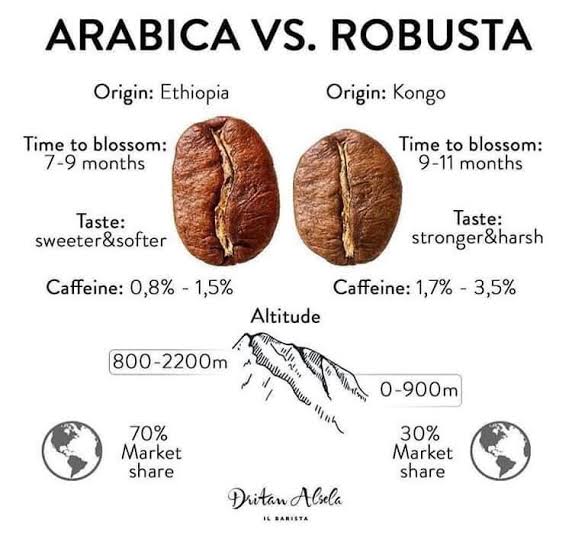
Arabica and Robusta are two primary species of coffee beans that differ in terms of flavour, characteristics, growing conditions, and uses. Here’s a comparison of Arabica and Robusta coffee:
Arabica Coffee:
- Flavour Profile: Arabica coffee beans are known for their wide range of flavours, often including floral, fruity, and wine-like notes. They can also have complex flavour profiles with varying levels of acidity, sweetness, and aromatic qualities.
- Caffeine Content: Arabica beans generally contain less caffeine than Robusta beans. This contributes to the smoother and milder taste of Arabica coffee.
- Acidity: Arabica coffee tends to have a higher acidity level, which can lend brightness and complexity to the flavour.
- Body: Arabica coffee usually has a lighter body compared to Robusta coffee.
- Growing Conditions: Arabica coffee plants thrive in higher elevations with cooler temperatures and adequate rainfall. They are more susceptible to pests and diseases, making them relatively harder to cultivate.
- Appearance: Arabica beans often have an oval shape with a curved crease on one side.
- Oils: Arabica beans have fewer natural oils on their surface compared to Robusta beans.
Robusta Coffee:
- Flavour Profile: Robusta beans generally have a stronger and more bitter taste compared to Arabica beans. Their flavours can include earthy, woody, and nutty notes.
- Caffeine Content: Robusta beans contain more caffeine than Arabica beans. This contributes to the more robust and intense taste.
- Acidity: Robusta coffee typically has lower acidity compared to Arabica coffee.
- Body: Robusta coffee has a heavier and fuller body with a thicker mouthfeel.
- Growing Conditions: Robusta coffee plants are hardier and can thrive in lower elevations and hotter climates. They are more resistant to pests and diseases, making them easier to cultivate.
- Appearance: Robusta beans are rounder and have a straight crease on one side.
- Crema: Robusta coffee is often used in espresso blends because it produces a thicker and more pronounced crema due to its higher natural oil content.
Both Arabica and Robusta beans have their own unique qualities, and coffee blends can be made from different ratios of these beans to achieve desired flavour profiles and characteristics. Arabica is generally favoured for its nuanced flavours and complexities, while Robusta is often used for its higher caffeine content and ability to provide body and crema in espresso blends. The choice between Arabica and Robusta ultimately comes down to personal preference and the desired characteristics in the cup of coffee.
Coffee FAQ – Can Coffee be decaffeinated?

Arabica and Robusta are two primary species of coffee beans that differ in terms of flavour and their characteristics are always in Coffee FAQ’s so growing conditions and uses depend on how the beans will taste in the final product. Here’s a comparison of Arabica and Robusta coffee:
Arabica Coffee:
- Flavor Profile: Arabica coffee beans are known for their wide range of flavours, often including floral, fruity, and wine-like notes. They can also have complex flavour profiles with varying levels of acidity, sweetness, and aromatic qualities.
- Caffeine Content: Arabica beans generally contain less caffeine than Robusta beans. This contributes to the smoother and milder taste of Arabica coffee.
- Acidity: Arabica coffee tends to have a higher acidity level, which can lend brightness and complexity to the flavour.
- Body: Arabica coffee usually has a lighter body compared to Robusta coffee.
- Growing Conditions: Arabica coffee plants thrive in higher elevations with cooler temperatures and adequate rainfall. They are more susceptible to pests and diseases, making them relatively harder to cultivate.
- Appearance: Arabica beans often have an oval shape with a curved crease on one side.
- Oils: Arabica beans have fewer natural oils on their surface compared to Robusta beans.
Robusta Coffee:
- Flavour Profile: Robusta beans generally have a stronger and more bitter taste compared to Arabica beans. Their flavours can include earthy, woody, and nutty notes.
- Caffeine Content: Robusta beans contain more caffeine than Arabica beans. This contributes to the more robust and intense taste.
- Acidity: Robusta coffee typically has lower acidity compared to Arabica coffee.
- Body: Robusta coffee has a heavier and fuller body with a thicker mouthfeel.
- Growing Conditions: Robusta coffee plants are hardier and can thrive in lower elevations and hotter climates. They are more resistant to pests and diseases, making them easier to cultivate.
- Appearance: Robusta beans are rounder and have a straight crease on one side.
- Crema: Robusta coffee is often used in espresso blends because it produces a thicker and more pronounced crema due to its higher natural oil content.
Both Arabica and Robusta beans have their own unique qualities, and coffee blends can be made from different ratios of these beans to achieve desired flavour profiles and characteristics. Arabica is generally favoured for its nuanced flavours and complexities, while Robusta is often used for its higher caffeine content and ability to provide body and crema in espresso blends. The choice between Arabica and Robusta ultimately comes down to personal preference and the desired characteristics in the cup of coffee.
Coffee FAQ – Is it safe to drink coffee while pregnant?
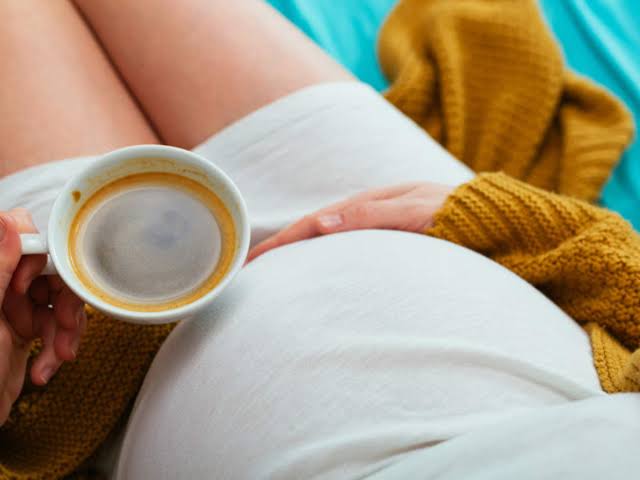
The consumption of caffeine during pregnancy is a topic of discussion and consideration often in Coffee FAQ’s. While moderate caffeine consumption is generally considered safe for most pregnant women, it’s also important to be cautious and mindful of caffeine intake due to potential risks.
Here are some key points to consider:
- Moderation: Most health experts and organizations, including the American College of Obstetricians and Gynaecologists (ACOG) and the World Health Organization (WHO), suggest that moderate caffeine consumption (about 200 to 300 milligrams per day) is unlikely to cause harm to the foetus. This is roughly equivalent to one 12-ounce cup of brewed coffee.
- Risks of Excessive Caffeine: High levels of caffeine consumption during pregnancy have been associated with an increased risk of miscarriage, preterm birth, low birth weight, and developmental issues. It’s important to note that these risks are more likely to be associated with very high caffeine intake.
- Individual Sensitivity: Some pregnant women might be more sensitive to caffeine’s effects due to changes in hormone metabolism during pregnancy. This could lead to increased heart rate, jitteriness, or difficulty sleeping even with lower caffeine consumption.
- Caffeine Content in Different Sources: Remember that caffeine is not only found in coffee but also in other sources such as tea, soft drinks, energy drinks, chocolate, and certain medications. It’s important to account for caffeine intake from all sources.
- Decaffeinated Options: If you’re concerned about caffeine intake, you can choose decaffeinated coffee or other caffeine-free beverages.
- Consulting Healthcare Provider: If you’re pregnant or planning to become pregnant, it’s always a good idea to discuss caffeine consumption with your healthcare provider. They can provide personalized guidance based on your individual health situation.
In summary of Coffee FAQ, moderate caffeine consumption is generally considered safe during pregnancy. However, it’s advisable to be mindful of your caffeine intake and to consult with your healthcare provider to ensure that you’re making the best choices for your health and the health of your baby. If your concerned, then ask your medical professional.
Coffee FAQ Summary.

In conclusion, the world of coffee is vast and varied, and there are endless opportunities to explore and experiment with this beloved beverage. Whether you are a seasoned coffee connoisseur or a curious beginner, there is always something new to learn and discover.
This Coffee FAQ has aimed to provide answers to some of the most common questions about coffee, from its origins and production methods to brewing techniques and health benefits. By understanding the basics of coffee, you can not only enjoy a better cup of coffee but also appreciate the cultural and historical significance of this drink.
We hope that this FAQ has been helpful and enlightening for readers and has sparked their interest in the world of coffee. We encourage readers to continue to explore the vast and varied offerings of the coffee world, from specialty roasts and blends to alternative brewing methods and unique flavour combinations.
As you explore the world of coffee, remember to savor the experience and enjoy the journey. Whether you prefer a simple cup of black coffee or an elaborate latte, coffee can be a source of comfort, inspiration, and connection. So sit back, relax, and enjoy a delicious cup of coffee today.
Author.
Brendon McAliece is a multi-lingual expat who brings over three decades of flight simulator/PC building experience as well as over two decades of real-world jet fighter experience as a weapons/egress technician. He holds a sport pilot certificate giving him real-world flying experience. Hi travels have taken him from Europe to the Middle East, Asia and his home of Australia. He has a passion for travel, languages, Flight simulation as well as Guitaring and Coffee. You can read more in his blogs below.

Learn more @
DreamingGuitar.com – DreamingCoffee.com – LetsFlyVFR.com
Home – Blog – Shop – About
As an Amazon.com affiliate I may earn on qualifying purchases.

